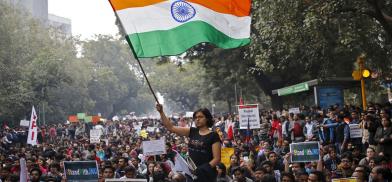India's seminal Right to Information law is used extensively, despite efforts to impede it, says book
Despite attempts to dilute the Right To Information Act (RTIA) the most recent being in 2019, the stronger it got as more and more citizens invoked it

Despite attempts to dilute the Right To Information Act (RTIA) the most recent being in 2019, the stronger it got as more and more citizens invoked it. Once a law hits the ground, it attains a life of its own and a constitutionally-granted right cannot be withdrawn but can only be "consciously blunted".
The fact that it has been used 24.4 million times between 2005-16 shows that "it is now in the hands of the citizens and citizens groups to use RTI and strengthen the legal regime", says a deeply-researched book that contends a "tipping point" had been reached that led to its enactment and the only way now is -- forward.
"In my view when a law hits the ground it attains a life of its own. Despite these problems and dilutions, RTIA has been extensively used across the country (24.4 million between 2005-2016 according to a modest estimate). My own study of the state of Bihar shows that against all odds, RTIA as an institution has substantially progressed, evident in extensive use of RTI. Based on these field insights, I am inclined to argue that institutional change still holds valid, as the recent dilutions have not countermanded the norm change from the previously locked in norm of 'secrecy' to 'openness'," Himanshu Jha, who teaches at the Department of Political Science at Heidelberg University, told IANS in an interview of his book, "Capturing Institutional Change -- The Case of the Right to Information Act in India" (OUP).
"A constitutionally-granted right such as the RTI, cannot be withdrawn but can be consciously blunted. This is evident in the recent amendments, which do not directly alter the power of the information commissioners but introduce changes in the service rules and salaries of the commissioners with a clear attempt to impede the law.
"Clearly, the stage after institutional change is riddled by yet another kind of ideational contestation. Relationship between the information givers and information seekers is often tumultuous and multi-hued. For example, on the one hand the legal tool of RTI successfully reveals the cost of foreign travels by the Prime Minister and the council of ministers, while on the other RTI faces a negative response on the educational degrees of the PM and some the cabinet ministers," Jha maintained.
Nevertheless, the pressure and the scrutiny on the state to disclose information by its citizens "could not have been possible in the absence of institutional change that occurred in 2005. Veritably, the state itself reveals crucial information about the processes within the state - such disclosure was unimaginable in the pre-RTI period", he said.
For instance, the Department of Personnel and Training (DOPT) that administers the act recently made public the file notings showing that the government had proposed an ordinance to fulfil the objective of the RTI Amendment Bill 2019, "a policy initiative not accepted by the Prime Minister's Office. Such information from within the state would not have been possible prior to the RTI Act", Jha said.
Now that the law is in operation "it is also in the hands of the citizens and citizens groups to use RTI and strengthen the legal regime" as has happened in Rajasthan, where the state and the social actors "have ideationally collaborated to conceptualize a 'Jan suchana portal' (public information portal) and mobile app that gives access to real time information about various public policy programmes in the state.
Similarly, citizens groups such as the NCPRI (National Campaign for People's Right to Information), in response to the recent amendments, have launched a campaign to "Use RTI, To save RTI", urging citizens to constantly seek information from the state, Jha pointed out
To this extent, the book captures a riveting process of an "ideational churning" between the nested norm of secrecy and the emerging norm of openness. The historical and contemporary material used in the book reveals that this process had started right since independence, and that this long-drawn churning of 'ideas' had an incremental impact on state thinking. Incremental weight of earlier ideas reached a tipping point in 2005.
"Similar to the ideational churning that I have traced in this book, yet another churning is taking place between the information seekers and information givers. The impact of the 2019 amendment will have to seen to ascertain the long-term consequences of these amendments. Indeed, previous attempts of dilution have not deterred the citizens from using RTIA. The more citizens use it, the stronger will be the RTI Act," Jha asserted.
How did this book come about?
The idea for the book emerged around 2012 but the seeds were sown in early 2000s when he was involved in the development sector in India.
"My work (especially between 2004-2011) focused on monitoring the institutions of governance. This work was driven by the logic that institutions are vehicles that carry the governance agenda forward and, therefore, it was important to monitor these institutions. In my view seeking accountability from the state was paramount.
"My engagement with the development sector coincided with the time of considerable social-economic and political change in India. On the one hand country was experiencing growth, while on the other plethora of legally mandated social rights were extended to the citizens. These changes at many levels were institutional.One such right was the Right to Information Act 2005 which provided a legal regime to the citizens to seek information from the state ushering in an institutional change in the transparency regime in India. No such right or even policy existed before RTI Act.
"The processes and information within the state were shrouded in secrecy and limited to the corridors of public authorities. On numerous occasions as a practitioner I would also engage with this emerging legal regime and put into practice this significant right. In fact, I recall that at one of point of time I co-organised a workshop of RTI users from across the country to listen and to learn from their revealing experiences with what at that time was a new law. My book opens up by providing one such fascinating story of RTI use by a rickshaw puller in the state of Bihar," Jha explained.
The book is an eye-opener for political and governance experts, there's certainly much more to look forward to.
(IANS)









Post a Comment